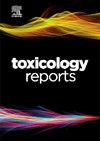A case report of a 79-year-old female with aluminum toxicity presenting with altered mental status in Eldoret, Kenya
Q1 Environmental Science
引用次数: 0
Abstract
Introduction
Aluminum is renally excreted and can cause toxicity in patients with end-stage renal disease (ESRD). In low- and middle-income countries (LMICs), potential sources of aluminum toxicity include the use of aluminum cookware and clay pots, well water, and contaminated dialysis water.
Patient concerns
We report a case of an elderly East African woman from a rural area with ESRD who was undergoing twice-weekly hemodialysis and who presented with altered mental status. Acute cardiac and neurological events were ruled out. A head CT scan was normal. Both the infectious and metabolic workups were unremarkable. Since the patient came from a rural home where her family used clay pots, aluminum utensils, and well water for drinking, a decision was made to rule out aluminum toxicity. Serum aluminum levels were significantly elevated at 534 micrograms/L.
Diagnosis
Aluminum toxicity based on the clinical presentation and elevated serum aluminum levels
Interventions
Daily hemodialysis with a high-flux dialyzer. Deferoxamine was not administered because of concerns about life-threatening neurotoxicity.
Outcomes
Her mental status started to improve within a week of initiating intensified hemodialysis. After nine months, her serum aluminum level decreased by more than 50 %, and the patient’s cognition returned to her baseline.
Take-home lessons
ESRD patients in LMICs are at greater risk for potential aluminum toxicity than are those in developed countries. Regular testing of serum aluminum levels is necessary in these patients since the initial presentation of aluminum toxicity can be nonspecific.
肯尼亚埃尔多雷特一名79岁女性铝中毒病例报告,表现为精神状态改变
铝通过肾脏排出,可对终末期肾病(ESRD)患者造成毒性。在低收入和中等收入国家,铝毒性的潜在来源包括使用铝制炊具和陶罐、井水和受污染的透析水。我们报告一位来自东非农村地区患有ESRD的老年妇女,她每周接受两次血液透析,并表现出精神状态改变。排除了急性心脏和神经系统事件。头部CT扫描正常。感染和代谢检查均无显著差异。由于患者来自农村家庭,她的家人使用陶罐,铝制餐具和井水饮用,因此决定排除铝毒性。血清铝水平显著升高至534微克/升。诊断:基于临床表现和血清铝水平升高的铝毒性。方法:每日高通量透析器血液透析。由于担心危及生命的神经毒性,没有给予去铁胺。结果:她的精神状态在开始强化血液透析的一周内开始改善。9个月后,她的血清铝水平下降了50%以上 %,患者的认知能力恢复到基线。与发达国家相比,中低收入国家的重度肾病患者潜在铝中毒的风险更大。定期检测血清铝水平对这些患者是必要的,因为铝毒性的最初表现可能是非特异性的。
本文章由计算机程序翻译,如有差异,请以英文原文为准。
求助全文
约1分钟内获得全文
求助全文
来源期刊

Toxicology Reports
Environmental Science-Health, Toxicology and Mutagenesis
CiteScore
7.60
自引率
0.00%
发文量
228
审稿时长
11 weeks
 求助内容:
求助内容: 应助结果提醒方式:
应助结果提醒方式:


